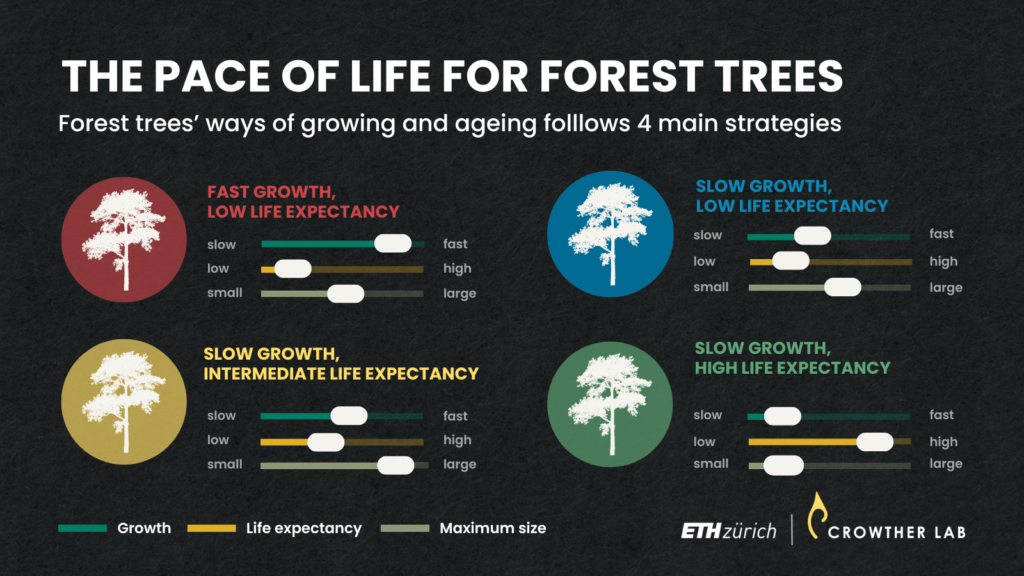Trees are some of Earth’s longest-living organisms. Yet, we still do not know a lot about the way they progress through life. Do trees ‘age’? What causes them to die? A study led by ETH Zurich dives into the patterns behind tree longevity and identifies four dominant life strategies. Their novel findings, published in Science, provide critical insights for biodiversity conservation and climate change mitigation.
Unlike humans and other animals, trees do not appear to ‘age’ and ‘grow old’, with many species having higher survival as they progress through life. Instead, death is mostly driven by external forces, such as drought, fire, and logging. The pace of life for trees is determined by trade-offs between survival, growth, and reproduction, with two common assumptions: fast-growing trees will have lower life expectancies, with predictable variation in the pace of life for trees across forest biomes. But are these suppositions really true?
A new publication in the journal Science offers a unified perspective of tree life expectancies across the Americas. Remarkably, in the absence of human disturbance, the oldest trees in tropical forests live as long as the oldest trees in boreal forests. Trees can also be accurately grouped into four dominant strategies. Fast-growing species appear constrained to shorter lifespans. Yet, slow-growing species separate into three clusters of low, intermediate, and high life expectancies.
These emergent patterns illustrate the flexible nature of trees and highlight the diversity of evolutionary trajectories that have arisen to address the ecological puzzle of survival. More diverse forests, that include a greater mixture of long-lived and short-lived species, also tend to have higher carbon sequestration. These findings offer important insights for biodiversity conservation and climate change mitigation.
The research, led by the Crowther Lab at ETH Zurich, was co-developed by an international team of 120 researchers with diverse expertise and backgrounds – including botanical taxonomists, field ecologists, theoreticians, ecosystem modellers, and actuarial statisticians. These emergent patterns were informed by 3.2 million measurements collected by members of the ForestPlots network and the TreeMort project. This highly collaborative research provides the most comprehensive assessment of tree longevity patterns across biogeographic gradients to date.
This work was co-developed by an international team of researchers, including members of ForestPlots and ForestGeo networks, the TreeMort collaboration, and the Canadian and United States forest inventory programs. Find them here: ForestPlots | TreeMort | ForestGEO
Reference
Bialic-Murphy, L., McElderry, R. M., Esquivel-Muelbert, A., van den Hoogen, J., Zuidema, P. A., Phillips, O. L., Almeida de Oliveira, E., Alvarez Loayza, P., Alvarez-Davila, E., Alves, L. F., Andrade Maia, V., Aparecida Vieira, S., da Silva, L. C. A., Araujo-Murakami, A., Arets, E., Astigarraga, J., Baccaro, F., Baker, T. … Pugh, T., Crowther T. W. (2024). The Pace of Life for Forest Trees. Science, 386(6717), 92-98. https://www.science.org/doi/10.1126/science.adk9616

